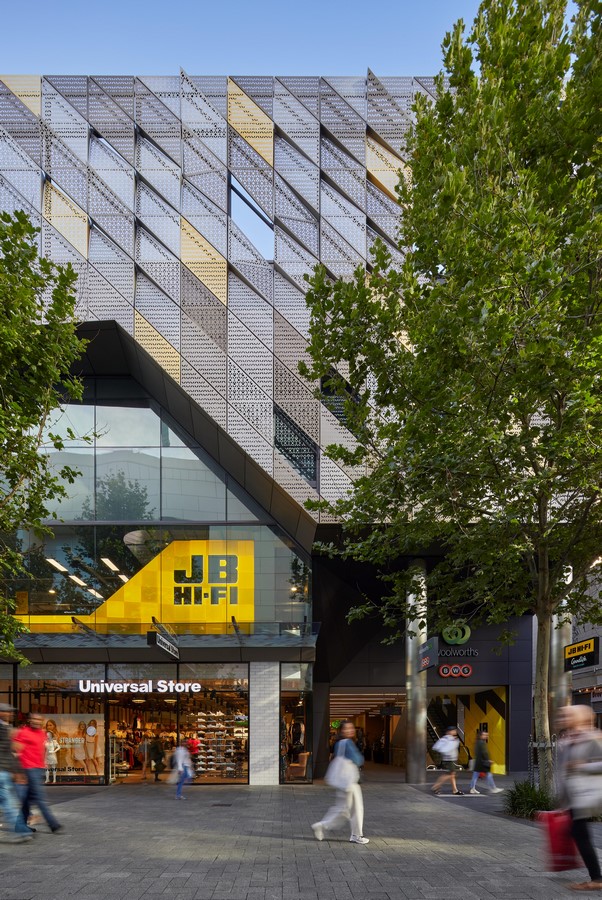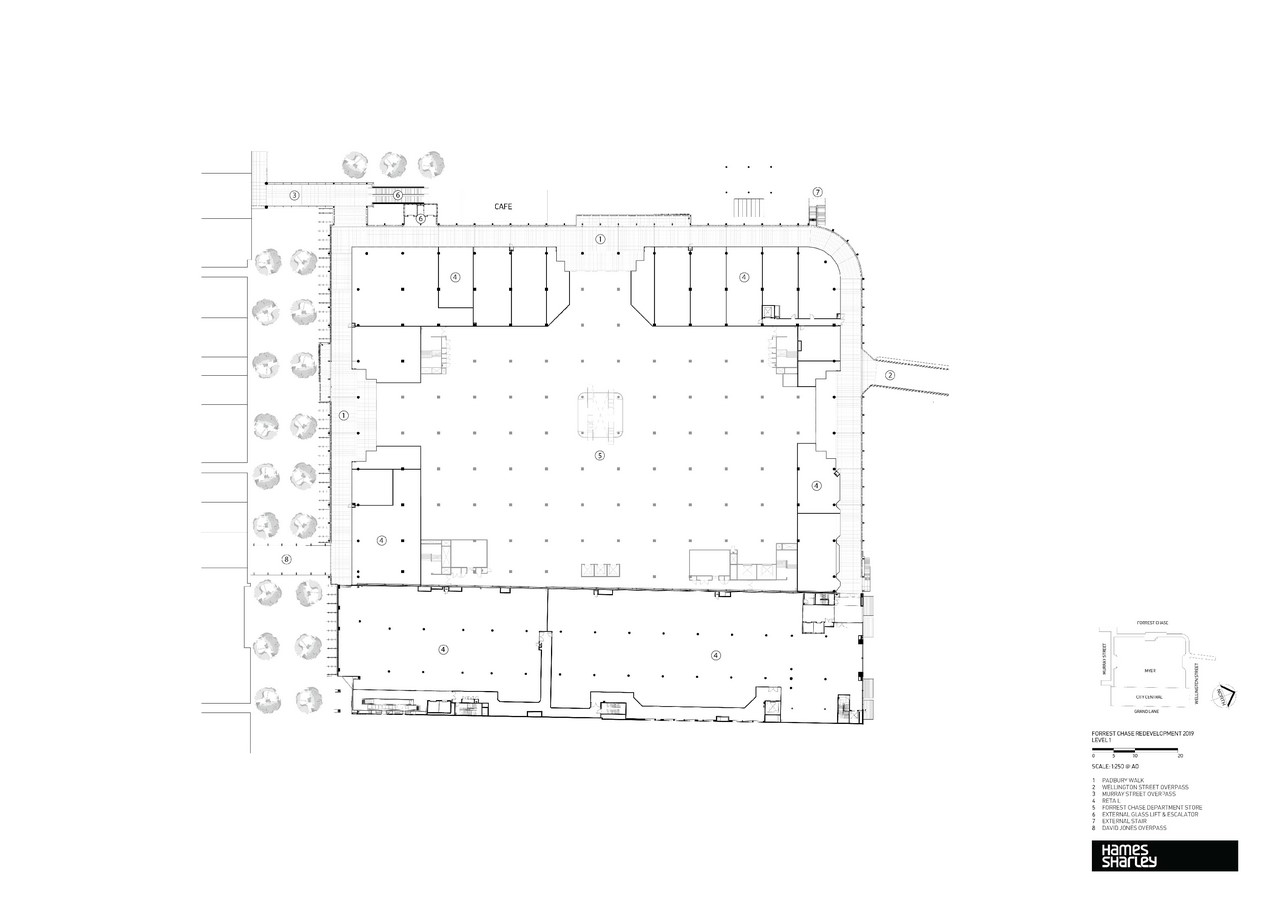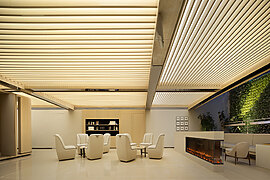After the COVID-19 isolation period passes, a revitalised city heart awaits Perth commuters, shoppers and diners. Renowned Perth architecture practice, Hames Sharley, were the lead architects on the redevelopment, which includes a new façade for a large retail precinct, known as Forrest Chase, together with a reimagined overpass on the Murray Street Mall and an enlivened gathering space, which locals refer to as Padbury Walk.
Project Name: Forrest Chase
Studio Name: Hames Sharley
Project Size: 43000
Completion Date: 2020
Building Levels: 2
Location: Perth, Australia
Photography: Douglas Mark Black

Hames Sharley Director Derek Hays says that although the design was conceived prior to the emergence of the COVID-19 pandemic, the approach was rigorously future-focused. “Retail environments have been evolving for some time, as shoppers look to these hubs for much more than a retail experience,” Derek says. “The desire to not only shop but to gather together for other recreational and/or dining experiences was evident long before the pandemic — and that pattern looks set to continue, long after the pandemic passes.”
In short, Hames Sharley’s goal was to elevate the precinct’s overall appeal. “By improving connectivity between each site, and ‘future proofing’ for additional dining opportunities, the design helps facilitate greater engagement with all three locations,” Derek says.

Padbury Walk, originally constructed in the 1980s, is an elevated walkway that wraps around the perimeter of Forrest Chase. Hames Sharley’s redesign focuses on the removal of previously existing visual and physical obstructions in the public realm instead replacing it with the addition of a thin veil of stepping and layered fritted glass to provide improved sightlines to the retail shopfronts and adjacent Forrest Place whilst still providing protection and thermal comfort for pedestrians. The Walk’s original heavy concrete columns were replaced with steel columns that now creates a contrast to the masonry construction of the adjacent historic buildings whilst maintaining the civic scale surrounding Forrest Place. High aluminium clad soffits, with glass skylights, create a grand scale and natural light for pedestrians and shoppers to enjoy. By night integrated and programmable LED lighting and large events LED screen allow the walkway to contribute to the vibrancy of the city after hours and during seasonal events in the city. Two balconies located on the west and south elevations of the walkway provide future opportunities for retail outlets and pedestrians to break away from the main walkway to seamlessly observe city life.

Hames Sharley’s strategy for the Murray Street overpass was to redesign the bridge and canopy to invert the old structural design by locating the structural elements in the roof space. This approach allowed for the introduction of delicate steel rods to suspend the thin concrete walkway and open sightlines to the city environs, Forrest Chase building and retail located within. A simple plane of the polished stainless steel was introduced to the soffit of the bridge with the intent to reflect the city’s activities to passers-by.
Finally, the perimeter retail offerings in Forrest Chase were replanned to provide more appealing sized spaces in line with current retail requirements. Double-height shopfronts were designed to allow for retailers to fit out and revive Forrest Chase as a premier retail offering in Perth’s CBD.

Carillon redevelopment next up for Hames Sharley
Hames Sharley’s retail design expertise is in high demand as evidenced by their latest project — the proposed Carillon redevelopment, also located in Perth’s CBD. This multi-level, mixed-use development looks set to include retail, hospitality, entertainment zones and commercial office space that will continue to help re-establish Perth’s CBD as the premier retail destination.
According to Derek Hays, Hames Sharley is delighted to have been appointed as lead architects for Carillon’s redevelopment. “Our team relishes the challenge of contributing to projects that generate increased activity and engagement within our city centre. As both designers and community members, we find this type of work deeply satisfying.”




























